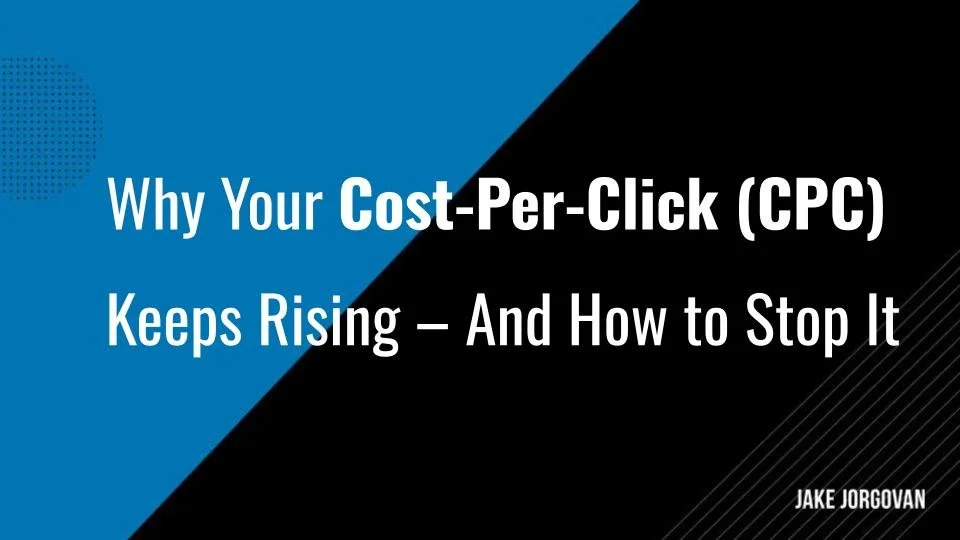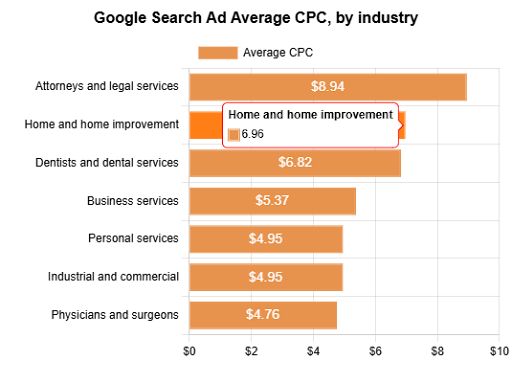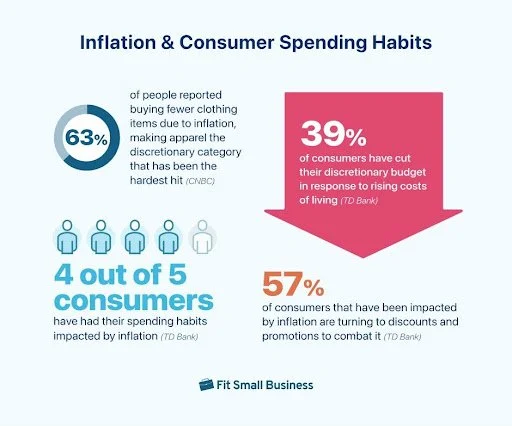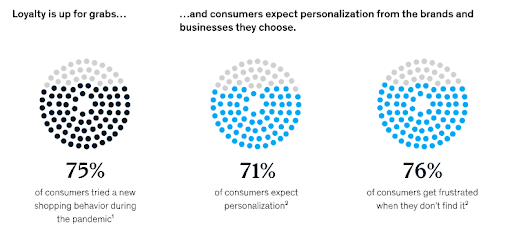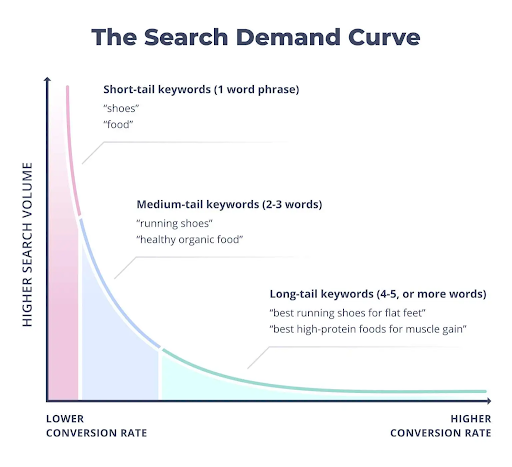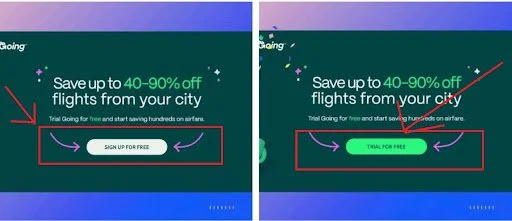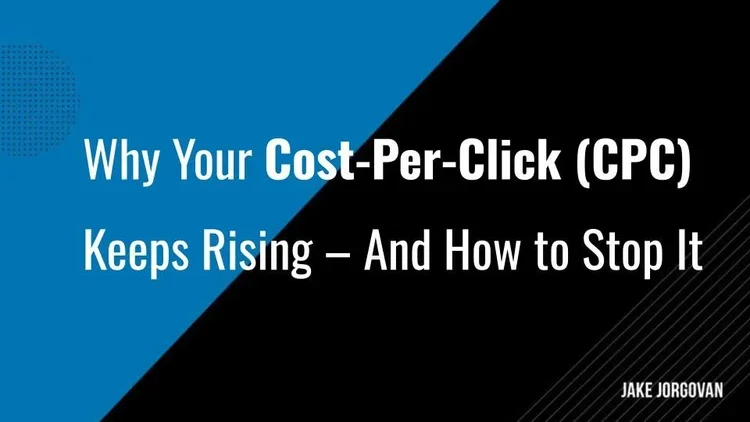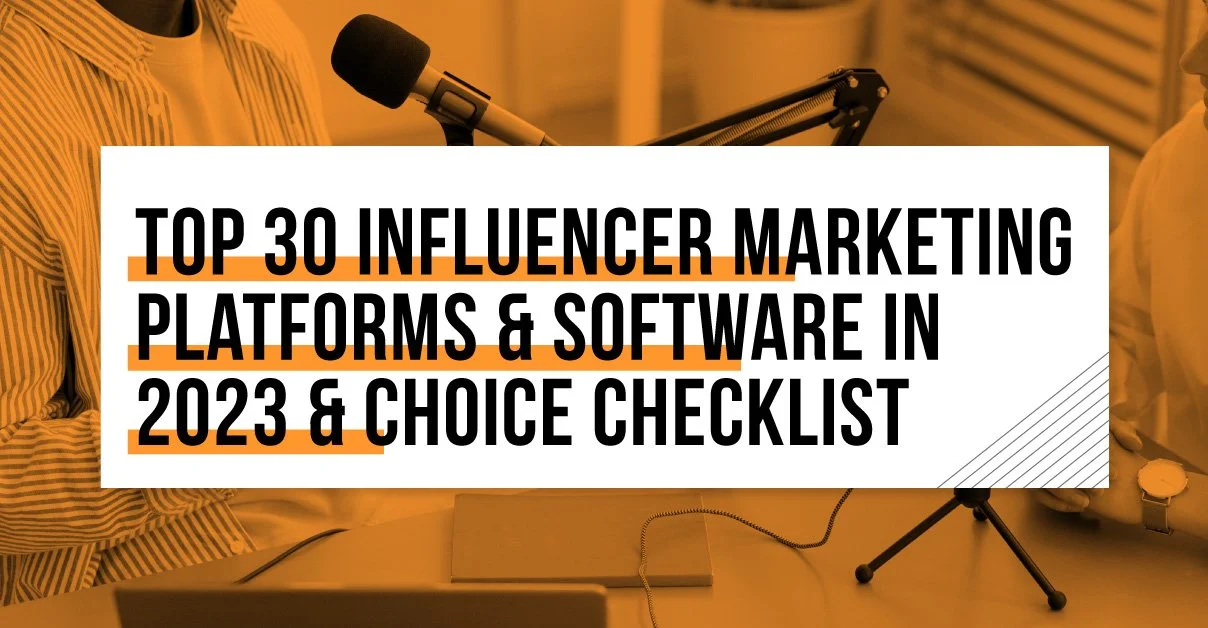Why Your Cost-Per-Click (CPC) Keeps Rising – And How to Stop It
In 2024, the average cost-per-click (CPC) across Google Ads rose by 19%, marking the steepest annual jump in recent years. Similarly, Facebook also saw its CPC increase for 80% of industries.
This spike isn't temporary; it reflects deeper changes in auction dynamics, cut-throat competition, and constantly changing algorithms. It’s already becoming expensive to advertise online, and if your CPC is too high, you’d sweep through your ads quickly without seeing any real impact.
There can be a number of reasons behind a sudden or even slow rise in CPC. In this article, we’ll uncover the underlying causes and list 10 strategies to bring your ad campaign’s CPC down to a healthy level.
What is CPC?
Cost-per-click (CPC) is the amount you pay each time someone clicks on your online advertisement.
It's an incredibly important metric in pay-per-click (PPC) advertising models, such as Google Ads, where advertisers bid on keywords to display their ads to users searching for related terms.
CPC varies based on several factors, for example, keyword competition, quality, and ad relevance. In turn, these metrics vary by platform.
For instance, Quality Score is a metric used by Google to assess the relevance and quality of your ads, keywords, and landing pages. A higher Quality Score may lead to lower CPCs and better ad placements.
In 2024, the average CPC across all industries in Google Ads was reported to be $4.66, with variations depending on the industry. For instance, the legal services industry had some of the highest CPCs, averaging $8.94, while the arts and entertainment sector had lower CPCs, around $1.72.
How is CPC Calculated?
The general formula for calculating CPC is straightforward:
CPC = Total Advertising Cost / Number of Clicks
For example, if you spend $500 on a campaign and receive 250 clicks, your CPC is $2.00.
Most platforms report CPC using this formula, but some may take a different approach. For instance, Google Ads runs ads using a bidding system.
In Google Ads, your actual CPC is determined by a dynamic auction system that factors in your maximum bid, Quality Score, and the competitiveness of the auction. The actual CPC is calculated using the following formula:
Actual CPC = (Ad Rank of the advertiser below you / Your Quality Score) + $0.01
This means you often pay less than your maximum bid, especially if your ad has a high Quality Score.
For instance, if the advertiser below you has an Ad Rank of 80 and your Quality Score is 10, your actual CPC would be (80/10) + $0.01 = $8.01. This system rewards ads that are more relevant and provide a better user experience.
Why Is My CPC Rising? 7 Possible Reasons
If you're noticing an upward trend in CPC over time, it's time to take a step back and assess what might be causing this increase. While clicks on your ads are great, they might not lead to a sale or conversion. Naturally, you want to keep the CPC low while getting more clicks.
Here are the main reasons why CPC goes up in paid marketing campaigns:
1. Your Google Budget Is TOO Big
Google is the most popular platform for PPC campaigns, which makes sense. There are over 16.4 billion searches on Google daily. It also has comparatively higher CPCs, which sometimes pushes marketers to allocate unnecessarily high budgets to Google PPC campaigns.
However, this move can sometimes lead to inefficiencies, especially if not managed with a strategic approach to advertising. A larger budget may prompt the system to expand your reach to broader match types and less relevant audience segments.
That will potentially increase the cost of clicks without a corresponding rise in conversion rates because your ads are getting clicked by the wrong audience. Also, expanding your budget with a low quality score can cause CPC to rise.
2. More Competition
If your CPC is high despite a well-thought-out strategy and optimized campaign, chances are the competition in your industry is simply too tough.
With more advertisers bidding on the same keywords, the bid amounts go up, and so does the CPC. Some of the most in-demand keywords (usually short-tail generic ones) can have a lot of heated competition. For instance, the keyword ‘insurance’ has the highest CPC of $54.91.
“One major cause of rising CPC rates is competition. An increasing number of businesses are establishing their online presence. Securing that top spot in search results becomes increasingly challenging, unfortunately driving up the CPC,” Correy Morris, President/CEO, Voltage
You can see if competition is the reason behind your high CPC by checking the Auction Insights report in Google Ads or Auction Insights on Meta. It can help you understand your position relative to competitors.
3. Algorithmic Changes
Search engines frequently update their algorithms, which affects how ads are ranked and displayed. These changes can impact your Quality Score, which in turn influences your CPC.
Google, Meta, and other social media platforms for paid advertisements consider a variety of factors, which ultimately determine the feasibility and relevance of your ad by the platform. If the weight for even a single factor is changed, it can have an impact on ad position and CPC.
Stay informed about algorithm updates. Adapt your digital marketing strategy to any changes in how these platforms evaluate bids.
4. Economic Influences
Economic trends, such as inflation and shifts in consumer spending, can also affect online advertising costs.
As businesses adjust their marketing budgets in response to economic conditions, the competition for ad placements may increase.
Similarly, if general inflation is too high, consumers might cut down on spending, which could mean fewer clicks on ads and a higher CPC. This is all the more relevant for ecommerce. For instance, the ecommerce sector growth was just 6.5% in 2022 because of inflation compared to 25.7% in 2020.
And these spending cuts tie back to marketers' budgets. Desperate for clicks and sales, marketers might double down on their PPC budgets, which, in turn, increases everyone’s CPC.
5. Changing Consumer Expectations
Consumers now expect a seamless user experience and highly relevant ads. A McKinsey survey in 2021 found that 71% of consumers want personalized interactions with brands. The same can be said about paid advertisements.
If your ads and landing pages don't meet these expectations, your Quality Score may suffer, resulting in higher CPCs.
For this particular issue, you may want to look at your landing page experience. Is it optimized for conversion? Does it deliver the information, product, or service the user wants? If not, you’d be paying a high amount for those clicks that likely won’t convert either.
6. Seasonal Effect
At certain times of the year, such as holidays or major events, the competition in online advertising may be particularly heated. During these periods, more advertisers vie for visibility, driving up CPCs.
Take, for example, Christmas time. It’s the time of the year when people are buying presents for their loved ones. 63% of Americans do at least some of their Christmas shopping online.
Retailers understand that this is the time for them to increase sales and generate revenue. They might advertise more aggressively, increasing their daily budgets. And as discussed earlier, more competition in ad bids typically results in higher CPCs.
7. Ad Fatigue
Running the same ads for extended periods can lead to ad fatigue, where users become less responsive to your messages. This decline in user engagement can lower your click-through rate (CTR) and Quality Score, increasing your CPC.
Ad fatigue can be so inconspicuous that it’s dubbed the ‘silent killer.’ Ultimately, unchecked ad fatigue results in wasted ad spend, lower conversion rates, and a decline in overall campaign performance.
“When ad fatigue sets in, it doesn’t just hurt your CTRs. It also leads to rising costs, wasted impressions, and even a loss of brand credibility,” Neil Patel, Owner, Ubersuggest
Regularly refreshing your ad creatives and testing new variations may keep your audience engaged and help maintain cost efficiency.
10 Proven Strategies to Bring Your CPC Down
Let’s get to business now and talk about how exactly you can stop your CPC from chewing away a major chunk of your marketing business:
1. Segment Your Audience
Audience segmentation involves dividing your potential customers into distinct groups based on shared characteristics such as demographics, interests, or behaviors. This strategy makes targeted advertising easier and delivers optimized campaign performance.
For example, by segmenting your audience based on device usage, you can tailor your ads to mobile users, who may have different preferences and behaviors compared to desktop users. This targeted approach can lead to higher click-through rates (CTR) and lower CPCs.
The good news is that segmentation is quite simple to implement in your PPC campaigns. Google Ads' audience segmentation features can help identify and target these specific groups effectively.
Social media platforms like Facebook and Instagram also provide features for segmenting your ad audience automatically and manually with categories like demographics, interests, and behaviors.
Andraz Radovan, a digital marketing expert, says, “Segmentation isn't just a strategy; it's an art form. Tailoring your ads to resonate with different audience segments elevates engagement to new heights.”
2. Increase Quality Score
This is a no-brainer for Google PPC campaigns. If it’s not general inflation, seasonal changes, or higher competition, it’s like your Quality Score that’s bringing the CPC down.
There are multiple ways to increase your Google Ads Quality Score. But first, focus on the three components of this score, which are:
Expected click-through rate (CTR)
Ad relevance
Landing page experience
Each of these components may have one of three ratings: below average, average, or above average. If one or more are below average or even average, here’s what you should do:
Align ad text closely with user search terms for increased relevance.
Split ad groups containing diverse keywords into smaller, themed groups that better match specific searches.
Group keywords into relevant themes (e.g., product/service categories) to enhance ad relevance and performance.
Craft compelling and specific ad text that highlights your offer's unique benefits and aligns with your keywords' intent.
Experiment with clear calls to action using strong verbs that closely connect the ad message with your landing page experience.
Increase the relevance and usefulness of your landing page to users.
Regularly reviewing and refining your ads and landing pages can improve Quality Score, ultimately reducing your CPC.
3. Add and Experiment with More Keywords
Increase your keyword list and experiment with different keyword variations to discover new opportunities for lower CPCs.
Go with long-tail keywords, which are more specific and often less competitive, to attract more qualified traffic at a lower cost. But cost is not the only advantage. Long-tail keywords tend to have higher conversion rates as well, which is ultimately what you want to achieve with your PPC advertisements.
The average conversion rate of long-tail keywords is 36%.
This is where keyword research tools like Google Keyword Planner or Ubersuggest can be handy. Look for new keyword opportunities and monitor their performance. Pay attention to the search volume, competition, and potential bid cost.
Regularly updating and optimizing your keyword list can lead to improved campaign performance and reduced CPC.
4. Optimize Ad Placement
Optimizing your ad placements involves selecting the most effective locations for your ads to appear, whether on search engine results pages, specific websites, or within certain apps.
For this, you need to analyze performance data, so you can identify which placements yield the best results and allocate your advertising budget accordingly.
For example, if your ads perform better on mobile devices, increase your bids for mobile placements and reduce bids for less effective placements. This strategic approach can lead to higher CTRs and lower CPCs.
Similarly, for display ads, find out which websites or pages yield a good conversion rate for you, ideally with low CPC. You’d need to research what websites your target audience frequents. Don’t just settle for major publications. Instead, find niche websites that get the ideal audience, which is more likely to click (and convert).
5. Avoid Negative Keywords
Negative keywords are terms you don’t want to rank for because they’re irrelevant to your business and campaigns.
For instance, if you're advertising premium services, you may want to exclude terms like "free" or "cheap" to avoid attracting users who are unlikely to convert. This refinement can lead to more qualified traffic and lower CPCs.
To figure out negative keywords, you need to review your search term report. Look for terms that aren’t exactly meaningful for your business, or have very poor conversion rates, and are just wasting money.
Here’s an example of how it works and how to use negative keywords to your advantage:
6. Retarget High-Intent Users
Remarketing and retargeting involve displaying ads to users who have previously interacted with your website or ads. These users are more likely to convert by as much as 70%.
Retargeting is a cost-effective strategy for improving ROI and reducing CPC. And you can do it in pretty much every platform with a PPC ads option.
According to WebFX, the average cost of remarketing on Google is between $0.66 and $1.23 per click.
Use retargeting campaigns to re-engage potential customers and guide them further down the conversion funnel. When you focus on users who have already shown interest in your offerings, you can achieve better campaign performance at a lower cost.
7. Test Different Bidding Strategies
Experiment with various bidding strategies until you find the most cost-effective campaign approach. In Google Ads, strategy options include manual bidding, Target CPA (cost per acquisition), and Target ROAS (return on ad spend).
For example, using Target CPA allows you to set a desired cost per acquisition, and Google Ads will automatically adjust your bids to help achieve that goal.
If you never try, you’ll never know. If none of the above measures work, test different strategies, and you may just find the one that improves campaign performance and reduces CPC.
Pro tip: You can use free CPA and ROAS calculators from inBeat.co to manually calculate and verify these two key metrics for different campaigns.
8. Monitor and Adjust Keywords
Regularly monitor your keyword performance and make necessary adjustments. For instance, competition for certain keywords may change over time, and they might become more expensive to rank for.
Identify underperforming keywords and consider pausing or replacing them with more effective alternatives.
Again, turn to search term reports to see exactly how the keywords are performing. Use ‘cost’ to sort the terms and filter them with a conversion rate of less than one (>1). These are the keywords that aren’t bringing much or any revenue, so you might want to add them to the negative keyword list to bring your overall cost down.
Pro tip: Proactively discover high-performing, relevant long-tail search queries that users are already using to find you. Add these specific terms as new exact or phrase match keywords into tightly themed ad groups to capture proven, specific user intent more effectively and potentially at a lower cost per conversion.
9. Use Ad Extensions (Assets)
Ad extensions, now called assets in Google, provide additional information and increase the visibility of your ads, which leads to higher CTRs and improved Quality Scores. Types of ad assets include sitelinks, callouts, social information, and structured snippets.
Relevant ad extensions can make your ads more engaging and informative. With more information, users are more likely to click. And more clicks potentially mean lower CPC. A single ad asset may increase the CTR by 10-15%.
10. Run A/B Test
A/B testing, or split testing, involves comparing two versions of an ad to determine which performs better. By systematically testing variables like headlines, ad copy, and visuals, you can identify the most effective elements and optimize your campaigns accordingly.
For example, you can test different call-to-action (CTA) phrases to reveal which one resonates more with your audience, leading to higher CTRs and lower CPCs.
Here’s a case study. An online travel company Going, was facing low conversion rates for their premium travel deal subscriptions. They used A/B testing to optimize their homepage call to action (CTA).
Previously, they used a "Sign up for free" CTA for a limited plan, but they tested it against "Trial for free." They tried to better highlight the value of their full-featured premium offering by promoting a free trial of that plan instead. This simple change led to a remarkable 104% increase in trial starts month-over-month
Regular A/B testing ensures your ads remain effective and aligned with your audience's preferences.
Bonus Strategy: Optimize Landing Pages
Your landing page is tied to the Quality Score of your campaign in Google Ads, which could be part of the reason for high CPC. Optimizing your landing page can improve your ‘landing page experience’ rating and also improve your conversion rate.
After all, getting clicks is only half the job. The other half is getting the user to take action.
And if your CPC is high because of competition or seasonal fluctuations (which you can’t help), you might as well increase the likelihood of conversion with a spot-on landing page. Here are some ways to do that:
Ensure message match: Your landing page content, headline, and offer must directly align with the ad copy and keywords that brought the user there.
Clear and compelling headline: Immediately grab attention and state your main benefit or offer upfront.
Strong, visible CTA: Make your desired action clear, prominent, and easy to find (e.g., "Get a Quote," "Download Now," "Buy Now").
Optimize for speed: Fast-loading pages improve user experience and can positively impact your Quality Score and conversion rates.
Mobile responsiveness: Ensure your page looks and functions flawlessly on all devices, especially mobile.
Minimize distractions: Remove unnecessary navigation menus, links, or clutter that could divert visitors from the conversion goal.
Build trust: Include trust signals like testimonials, security badges, privacy policy links, or contact information.
Highlight key benefits: Clearly explain the value proposition and how your offer solves the user's problem.
Simplify forms: If using forms, only ask for essential information to reduce friction.
Use relevant visuals: Incorporate high-quality images or videos that support your message and brand.
Get Your CPC Under Control!
While higher-than-normal CPC is a common challenge in PPC ads, it's often a symptom of underlying issues rather than a barrier. Analyzing the possible cause and hitting it with the strategies listed above, you can bring down the CPC, regardless of the platform.
Since not every business has a marketing wizard at their disposal, it’s sometimes better to bring in the big guns for your paid media campaigns.
Struggling to make sense of rising CPC and fading ROI? A specialized agency can help you fix it. Check out our curated list of “Top Google Ads Agencies” to find a professional marketing agency to help you reduce CPC and CPA.
FAQs
What is a healthy CPC?
A healthy cost-per-click (CPC) varies by industry, platform, and campaign objectives. In 2024, the average CPC for Google Ads was $4.66. A CPC below the average can be considered healthy. However, consider the average CPC for your specific industry, as they tend to vary significantly.
Most importantly, a healthy CPC is one that results in a high conversion rate and ROI.
Why is my CPC increasing even though my competition hasn't changed?
Several factors can lead to an increase in CPC despite stable competition:
Quality Score decline: A drop in quality score due to fewer relevant ads or landing pages can increase CPC.
Economic trends: Inflation and changes in consumer behavior can drive up advertising costs.
Algorithmic changes: Updates to search algorithms can affect ad placements and bidding strategies.
How does ad quality and relevance influence CPC?
Ad quality and relevance are critical components of Google's Quality Score, which directly impacts CPC. A higher Quality Score indicates that your ads and landing pages are more relevant to users, leading to lower CPCs and better ad placements. Key factors influencing Quality Score are CTA, ad relevance, and landing page experience.
What impact does automated bidding have on my CPC?
Automated bidding strategies, such as Enhanced CPC (eCPC) and Target CPA, use machine learning to adjust bids in real-time based on the likelihood of conversions. Although these strategies optimize for conversions, they may also lead to higher CPCs if not monitored closely.
For example, Enhanced CPC can adjust keyword bids without caps, potentially increasing CPCs beyond profitable levels. It's essential to monitor performance metrics to see if automated bidding aligns with your advertising goals.
How can changes in search volume lead to higher CPCs?
Fluctuations in search volume can affect CPCs in several ways:
Increased demand: Higher search volumes can lead to more competition for ad placements, driving up CPCs.
Seasonal trends: Certain times of the year, such as holidays or major events, may see spikes in search volume, affecting CPCs.
Market trends: Shifts in consumer behavior or industry trends can influence search volume and CPCs.
Is high CPC bad?
A high CPC isn't inherently negative; it depends on the context of your advertising goals. If a higher CPC leads to more qualified leads and conversions, it may be justified. However, consistently high CPCs without corresponding ROI improvements may indicate inefficiencies in your campaign.
Improve Quality Score, try different campaigns with A/B testing, use negative keywords, and optimize ad placements to reduce CPC.
